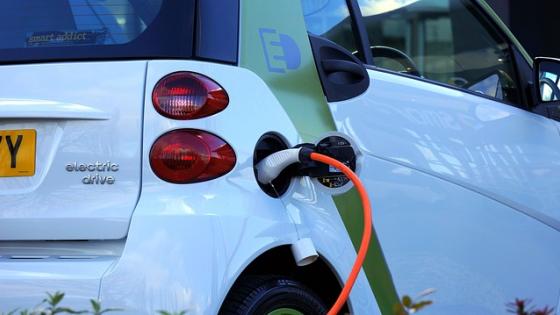After remaining relatively quiet for more than a century, the market for electric vehicles is undergoing a remarkable worldwide renaissance. This is most apparent in Norway, where the market share of electric vehicles has exceeded 15% of sales every month this year. Market shares are much smaller outside Norway, but nevertheless they are increasing year over year in places like England, France, and the US.
Sales and benefits of electric cars
At least part of the reason for this increase are subsidies and tax incentives that governments in each of these countries provide for the purchase of electric vehicles. Li et al. (2015) attribute approximately 50% of electric vehicle sales in the US to the $7,500 subsidy provided by the Federal Qualified Plug-in Electric Drive Motor Vehicle Credit.
There are a variety of motivations put forth to justify these subsidies. The overarching idea is that electric vehicles create public benefits relative to gasoline vehicles. And, because individual consumers may not consider these benefits when deciding what vehicle to purchase, electric cars should be subsidised to encourage adoption.
We can roughly classify these benefits into four categories: environmental, reduced oil consumption, innovation, and network benefits.
- Environmental benefits stem from the difference between pollution generated by the manufacture and use of gasoline and electric vehicles.
- Oil consumption benefits occur because electric vehicle use does not entail the risk of oil supply interruptions nor military expenditures to reduce this risk.
- Innovation benefits may not be fully captured by innovating companies and thus may justify subsidising the electric car market.
- Network benefits occur when subsidising electric vehicles today leads to incentives to develop charging infrastructure, which in turn increases adoption in the future, when presumably the electricity grid will be cleaner.
New research
We focus here on the first category – environmental benefits – as they are prominently cited by proponents of electric vehicles. However, researchers have found evidence questioning this assertion. Michalek et al. (2011) present a lifecycle analysis of environmental benefits. They consider environmental impacts associated with vehicle operation (burning gasoline or generating electricity) and other considerations such as manufacturing the vehicle and the battery, as well as processing gasoline and fuels for electricity generation. They find that an electric vehicle generates approximately $1100 greater environmental harm than a gasoline vehicle.1
In a recent paper (Holland et al. 2015), we study how the environmental benefit of vehicle operation varies from place to place in the US. We combine an econometric model of emissions from the electricity sector with a sophisticated model of damages from pollution to calculate the environmental benefit at the county level, as shown below in Figure 1.
Figure 1. County-level environmental benefit

- The benefit is large and positive in many places in the west because the western electricity grid is relatively clean – primarily a mix of hydro, nuclear, and natural gas.
- The benefit is large and negative in many places in the east because the eastern electricity grid primarily relies more heavily on coal and natural gas.
There are a few exceptions in the east, e.g. places like Atlanta in which the large population implies severe damages from gasoline cars so that electric cars have a small positive environmental benefit in spite of the dirty grid. Aggregating to the level of the state, the environmental benefits imply an electric vehicle purchase subsidy ranging from $3,000 in California to -$4,500 in North Dakota. On average, the implied subsidy from operating an electric vehicle is -$750. Although this analysis does not incorporate life-cycle benefits, the large differences in benefits across places suggest that whether or not an electric vehicle generates environmental benefits is critically dependent on local conditions.
- Our second finding is that electric vehicles export pollution across state borders to a much greater extent that gasoline vehicles.
Figure 2a shows the increase in particulate matter pollution associated with driving a fleet of gasoline vehicles in Fulton County Georgia. Most of the pollution is concentrated on the few counties in the immediate proximity. Figure 2b shows the increase in particulate matter pollution associated with driving a fleet of electric vehicles that are charged in Fulton County. The resulting pollution is distributed throughout the entire east coast and in fact most of it occurs outside the state of Georgia. A similar story occurs throughout the country. We determine that over 90% of damages from non-greenhouse gas emissions from driving an electric car in one state are exported to other states. In contrast, the figure is only 18% for gasoline vehicles. In the majority of states, driving an electric car makes that state’s air cleaner, but leads to increases in pollution in other states to such a degree that the overall environmental benefit from vehicle operation is negative.
Figure 2a. Increase in PM2.5 from driving gasoline cars in Fulton County

Figure 2b. Increase in PM2.5 from charging electric cars in SERC region

Conclusions
So should electric vehicles be subsidised for environmental reasons? The results in Michalek et al. (2011) and in our recent work suggest that it is difficult to justify a large uniform subsidy based on environmental benefits alone. In some states the subsidy should indeed be large and positive, but in others it should be large and negative. Of course, this conclusion may need to be revisited in the future as the electricity grid becomes cleaner.
References
Michalek, J, M Chester, P Jaramillo, C Samaras, C Shiau, and L Lave (2011), “Valuation of plug-in vehicle life-cycle air emissions and oil displacement benefits”, Proceedings of the National Academy of Sciences, 108: 16554-16558.
Li, S, L Tong, J Xing, and Y Zhou (2015), “The market for electric vehicles: Indirect network effects and policy impacts”, working paper, Cornell University.
Holland, S, E Mansur, N Muller, and A Yates (2015) “Environmental benefits of electric vehicles?”, NBER working paper w21291.
Footnote
1 See Table S-25. The life-cycle environmental costs of an electric vehicle (BEV240) are $4,668. The lifecycle environmental costs of a gasoline vehicle (CV, excluding the oil premium of $1,284) are $3,517.









